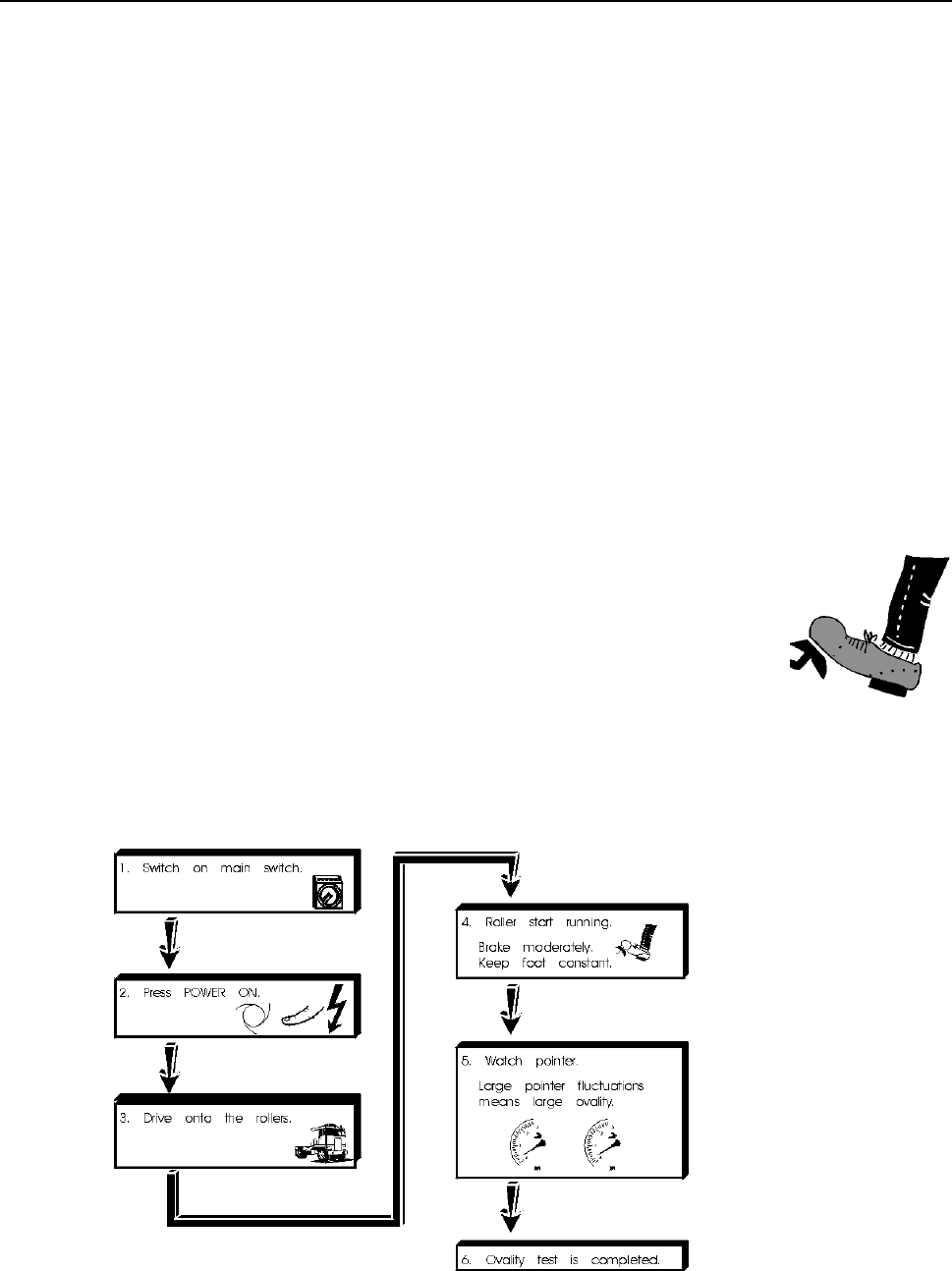
IW4/IW7 WB/WBV Operations
D1 0412BA1-GB04 23
3.5.1 Determining the Roller Resistance
Before the brake pedal is applied, check needles for roller resistance. The roller resistance can
have various values depending on vehicle type and load:
Car ca. 0,1 bis 0,6 kN
Truck ca. 0,5 bis 4,0 kN
The left-hand roller resistance should be approximately the same as the right-hand resistance. If
large differences exist, a bearing might be faulty or a brake be jammed.
If the roller resistance of one or both wheels is so excessive that tire damage by the rollers may
be anticipated or if the brake pedal has already been depressed, the start-up monitor will be
triggered when the wheel is started, immediately switching the test stand off.
3.5.2 Ovality Test (optional)
The ovality test serves to determine the quality of the brakes. "Ovality" defines faulty concentric
running of a wheel, e.g. out of round due to brake drum or disk brake deformation.
After the motors have started, wait until the yellow READY lamp lights up. The brake test can
now be started.
!
Apply moderate force to the brake pedal
Apply moderate force to the brake pedal - approx. half of the max. brake
force (switch-off value) and maintain brake force constant for at least one
wheel revolution. The needles in the display will show the ovality value.
The difference between the maximum and minimum display value of the
needle is ovaIity in kN.
! Press Ovality key
If a remote control is being used for testing, the ovality key must remain pressed
for one entire wheel revolution. The ovality is automatically stored with the brake
values.
Ovality Measurement
Fig. 3-7: The ovality measurement
The ovality value should not exceed 20% of the constant brake force. This value only represents
a suggested guideline and is not based on any legal regulation.


















